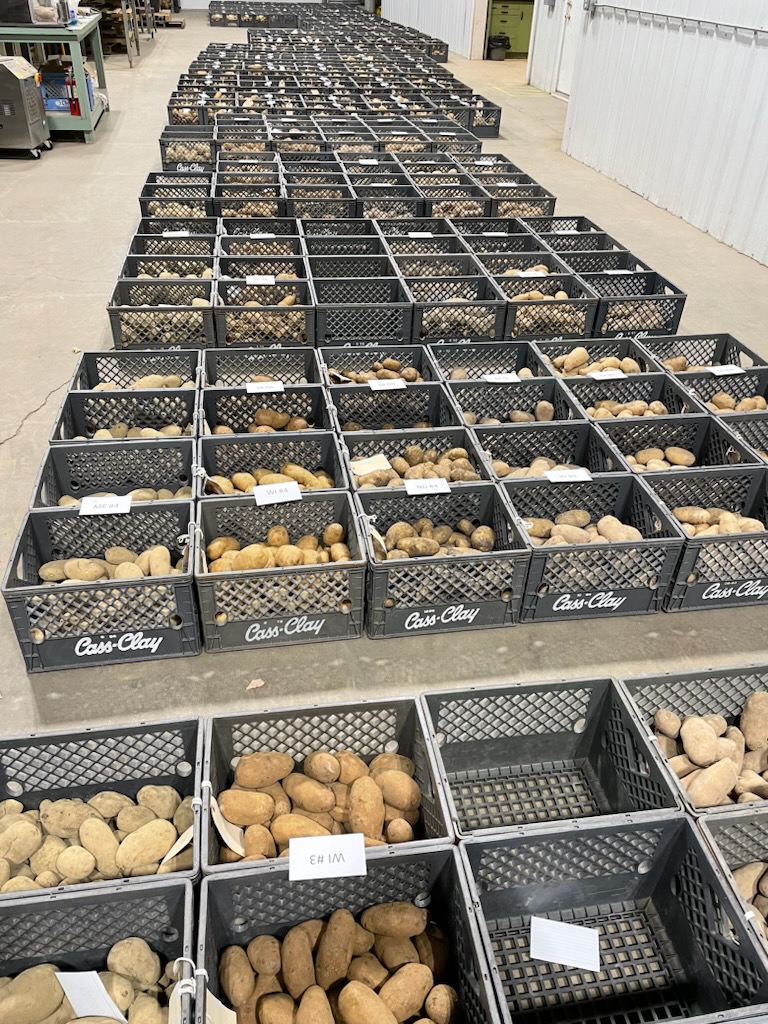|
Click to listen to this article
|
By Chris Voigt, Executive Director, Washington State Potato Commission
About 15 years ago, food manufacturers were caught flat footed when a group of researchers determined that foods cooked at high temperatures generated a natural chemical reaction between the sugars and an amino acid present in the food. This natural chemical reaction produced a potential carcinogenic called acrylamide. Acrylamide is present in about 50 percent of the food we eat. You can find it in most foods that are cooked at high temperatures. It is present in roasted coffee beans, crackers, bread, cereal, cakes, cookies, grilled meat, fries and chips. The highest acrylamide levels were found in sweet potato fries. Even though we’ve been eating acrylamides since our ancestors started cooking over a fire, the FDA was very interested in lowering the risk of acrylamide by lowering the amount in our diets.
The potato industry went to work. Potato processors and grower organizations quickly determined the best approach to lower acrylamide levels was through the breeding process. Develop new varieties that were low in sugar and/or low in the amino acid, asparagine. This industry consortium of processors and growers came together to fast track new variety development of potatoes that were low in acrylamide. The focus was finding new varieties that were low in sugars and low in asparagine and to trial those new varieties in six different growing regions in the U.S. Testing the potatoes coming out of storage was also important to make sure they maintained their low acrylamide levels throughout the year. The National Frozen Processing Trials (NFPT) was incredibly successful in lowering acrylamide levels and avoiding regulation by the FDA.

Today, the NFPT is still functioning, but its mission has changed. Acrylamide is still important, but now we use the NFPT as the primary screening tool looking for the next great French fry potato. The NFPT is a three-year process. Collectively in the U.S., we produce about 500,000 new clones each year. We take the 50 best clones and enter them into the first year of the NFPT. We focus on things like yield, gravities, sugars, fry color, shape, length/width ratios, storability, pest and disease resistance, and other quality features. If they survive this process, they graduate to year two for another round of trials. If they still look good after two years of trials in six different locations across the U.S., they qualify for another year of screening which includes important taste and texture trials. We don’t want to keep a variety around if it’s not going to meet the taste and texture requirements of our customers.
The NFPT members know that our focus has to be on finding varieties that our customers are going to love, but we also need to find varieties that produce more food using fewer inputs. The pipeline of new varieties looks great! I’m confident we can continue to meet the food needs of our growing population.
The Washington State Potato Commission is one of the 10 founding members of the NFPT. The work of the NFPT has been able to shave off several years required to bring a new variety to market. It has also saved the industry millions of dollars by eliminating poorly performing varieties earlier in the new variety development process, and it gets customer acceptance much sooner in the process. Most folks don’t know much about the NFPT, but it shows how successful we can be when we put our competitive differences aside and work together on solving industry issues.


